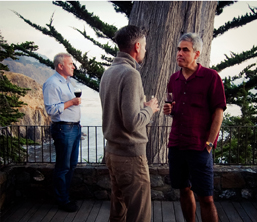
Breakthrough institute co-founder Michael Shellenberger and author Jonathan Haidt talk as Rich Tafel looks on.
Perched on a narrow stretch of the Big Sur Pacific coastline, Esalen Institute is about as far away as you can get from the Washington DC and still be in the same country—geographically, but also politically, culturally, and institutionally. Yet, for a few days in the first week of October, those distances were bridged, and Esalen played host to a carefully curated, invitation-only “conclave” of 24 experts to address the subject of Political Polarization. The result was three days of political and cultural analysis that surprised the insiders, educated the outsiders, engaged both Republicans and Democrats, and left everyone encouraged—not a small achievement when it comes to such a notoriously thorny subject.
“The polarization between the parties exists even when the issue under debate has no ideological content,” explained Brookings Institute scholar Tom Mann on the first morning. And he pointed to a telling statistic: “In the 1960s, 5 percent or so of Democrats and Republicans said they would be unhappy if their child married somebody from the other party. Today, it’s 49 percent of Republicans, 33 percent of Democrats. People today are more unhappy if their child marries someone from another party than someone from another religion.”
 Mann and his long-time intellectual partner and co-author Norm Ornstein (American Enterprise Institute) headlined the conclave, which was co-sponsored by the Institute for Cultural Evolution (ICE), a new think tank addressing political issues through cultural analysis, and the Breakthrough Institute, a growing Oakland-based environmental and political think tank. Other notable participants included NYU scholar Jonathan Haidt, author of the acclaimed The Righteous Mind; Rich Tafel, founder of the Log Cabin Republicans; and John Avlon, editor-in-chief of The Daily Beast.
Mann and his long-time intellectual partner and co-author Norm Ornstein (American Enterprise Institute) headlined the conclave, which was co-sponsored by the Institute for Cultural Evolution (ICE), a new think tank addressing political issues through cultural analysis, and the Breakthrough Institute, a growing Oakland-based environmental and political think tank. Other notable participants included NYU scholar Jonathan Haidt, author of the acclaimed The Righteous Mind; Rich Tafel, founder of the Log Cabin Republicans; and John Avlon, editor-in-chief of The Daily Beast.
“Political polarization” is one of those terms that can mean different things to different people. But however we define it, as Mann and Ornstein pointed out, its consequences can be disastrous. Constant gridlock, little interest in governing or lawmaking, no movement on key issues facing the country, a disaffection with the political process in all forms, and a growing distrust of government institutions are all faces of the fallout—not to mention the inability to respond effectively to domestic and international crises. Yet the stark urgency of those concerns also seemed far away from the soft sunsets, organic farm-to-table food, cliffside hot springs, and generally idyllic nature of the setting, providing a gentle cognitive dissonance that kept the atmosphere light even when the subjects were decidedly heavy. And it didn’t hurt the intimacy of the gathering that cell phone signals get decidedly weary as they make their way down Highway 1, fading to practically nothing at Esalen’s gates. So while the waves crashed against the rocks outside, participants had only each other for company as they discussed and debated a number of subjects—electoral reform, filibuster reform, campaign finance, the tribalization of media, the rise of self-declared Independents, even constitutional amendments.
Some, like Avlon, argued that the recent rise of registered Independents is a healthy sign of a nation bursting out of ideological categories. Others, like political scientist Alan Abramowitz, countered with political data showing that most Independents reliably lean left or right and can in fact be more partisan than self-declared Democrats and Republicans. Ted Buerger, of the popular advocacy group No Labels, presented his organization’s work in forming coalitions of “problem-solving” legislators reaching across ideological lines and challenging party politics. Haidt responded with a friendly challenge, suggesting that No Labels would be well-served to move beyond its pragmatic, technocratic approach and develop a more direct “moral appeal” to better inspire the electorate.
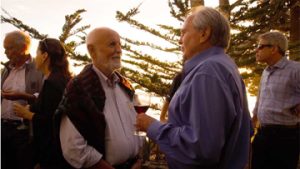
Facilitator Jay Ogilvy and Esalen founder Michael Murphy catch up on the first evening of the conclave.
Laura Chasin of the Public Conversations Project shared her dialogue work aimed at promoting greater solidarity and authentically trans-partisan relationships among political and cultural combatants in the public sphere. In fact, several participants expressed similar visions of a new spirit of civility in public discourse, though Mann cautioned that incivility may only be a consequence, not a cause, of a highly polarized political environment. Steven Hayward, conservative professor at Pepperdine and AEI fellow, gave a rich (and humorous) analysis of conservative philosophy as something much more important and substantive than a simpleminded resistance to progressive change. He also detailed the ways in which he had worked with the Breakthrough Institute to find rare common ground on environmental issues. ICE founders Steve McIntosh and Carter Phipps presented their projections of a less polarized “future left” and “future right” whose emergence can be not only anticipated but also encouraged.
Whatever the topic, the conversations were direct, frank, and friendly—whether during official sessions or unofficial evening hangouts, where the salty darkness of the Big Sur coast brought consoling closure to the day’s difficult deliberations. And whatever their differences, most agreed on one thing: America’s turn toward hyper-partisanship will not be easy to arrest. Ultimately, its source is neither institutional nor political. It’s cultural.
“It’s a cultural problem more than it is a structural problem,” one presenter explained. “And so it seems to me we have to think about ways to change the culture.”
A Polarized Culture: Causes and Consequences
“To say that we have asymmetric partisan polarization is not a partisan statement but a description of reality,” declared AEI scholar Norm Ornstein on the opening day. Translation: It’s mostly Republicans who are causing this mess. Ornstein, along with a number of other prominent political scholars, trace institutional hyper-partisanship back to Gingrich and his 1994 Contract with America. Few at the conclave disagreed with Ornstein’s portrayal of the Republicans’ rightward shift in recent years, but interestingly, most were less willing to let the blame for polarization fall so narrowly on the GOP’s shoulders. In fact, there were several who argued that the progressive Left were responsible in another way, tracing the roots of polarization back to the countercultural movements of the sixties and seventies.
Indeed, Nordhaus and Schellenberger of the Breakthrough Institute noted that the reactionary side of Republican politics was originally born as a counter-reaction to the progressive movements of the later decades of the twentieth century. Nordhaus pointed to the Free Speech movement at Berkeley as being the catalyst for Reagan’s rise to the California Governorship and eventually the Presidency—a sort of ground zero for the entire rise of the Republican Right. He suggested that, “the new progressive Left and modern conservatism were born in the same moment and from the same event.” And the so-called “Reagan Democrats” who carried Reagan to the Presidency in the eighties, blamed their disaffection, rightly or wrongly, on a perception that the Democratic Party had been too influenced by the excesses of the counterculture.
ICE’s Phipps agreed, suggesting that the breakdown of the “post-war liberal consensus” was largely due to these “very important but nonetheless immature” progressive movements. Therefore, he argued, polarization can be seen as “a natural consequence of the evolution and development of American culture, not a sign of its degeneration.” But with all new stages of development come significant new challenges. America’s political polarity is not a problem to be solved, McIntosh added, but a developmental system to be managed. Cultural change may be extraordinarily difficult and take time—“more like gardening than engineering,” as he put it—but we can still do our best to prepare the soil, plant the seeds, and nudge the system toward better long-term outcomes.
“We may not be able to make much impact on the next ten years, but perhaps our efforts can effectively change the course of the next ten years after that.” suggested Haidt, during his well-received presentation on the moral roots of hyper-partisan polarization.
Several participants cited future generational shifts as their source of hope, pointing out that political polarization was partially a Boomer phenomenon, born in the sixties and seventies, and institutionalized in the nineties and the early 21st century when that generation came to power. There is reason to believe that a generational change will bring with it a natural change in the level of polarization, Haidt argued, suggesting that younger generations are already depolarizing themselves around social issues, with gay marriage being one of the more dramatic examples.
“Hot Tub Diplomacy”
Too often these days, America’s political scientists feel a bit like geologists after a major earthquake. They can tell you how and why the disaster occurred but they can do little to improve the situation. They can analyze the data, describe the tectonic changes, improve the science, make tenuous predictions, but there is a certain helplessness in the face of the titanic forces at work. Similarly, the complex, deeply rooted issues surrounding political polarization simply overwhelm many attempts, however well intentioned, to address the subject.
Enter Esalen: an organization with an unusual capacity to bring together a wide range of experts and engage them in the same “hot tub diplomacy” that once addressed Russian-American polarization and even helped temper the anti-capitalist fervor of a young Boris Yeltsin. The conclave was hosted by Esalen’s Center for Theory and Research, the less well-known “think tank” side of the human potential mecca. Russian-American relations, Conscious Capitalism, Gestalt Psychology, Complexity Economics, and Evolutionary Philosophy are just a few of the topics that have been wrestled with inside this tiny, tucked-away haven that has played such an outsized role in incubating cultural movements.
“Esalen is known for its ability to create fellowships of leaders with diverse perspectives bonded in a shared purpose. We can help them support each other, collaborate, and amplify each others’ work,” explained conference convener Sam Yau. Judging by the overall quality of the conversations among scholars and activists from very different sides of the intellectual and political fence, the nascent fellowship among the conclave’s participants already seemed on good footing.
Notably, the conclave did not just bring together Republicans and Democrats, partisans and trans-partisans, and Washington insiders and political outsiders. Perhaps its most salient contribution was to convene both those who are approaching the issue through more conventional political methodologies and those who are addressing the broader psychological, cultural, and historical forces at work in our society. The group represented a “wider range of experiences and views than we commonly find,“ as one DC insider put it. Indeed, this more “integral” approach, to use a term long associated with several of the organizations involved, does at least begin to wrap its arms around the breadth of the issues at stake. Political polarization may very well be “even worse than it looks,” as Mann and Ornstein’s book by that name points out, but hints of optimism did also poke through the justifiable realism of the event’s grizzled political veterans.
“I do believe that networks like this can transform American democracy,” Tafel declared, citing his own experience as part of the improbable multi-decade march toward legalized gay marriage. That transformation will likely take decades, and require the hard work and the political and cultural acumen of many broadly aligned individuals and institutions. But who knows, perhaps a few of those alliances were formed in the burbling hot springs of the Big Sur coast and in the give and take of a very unconventional political gathering.

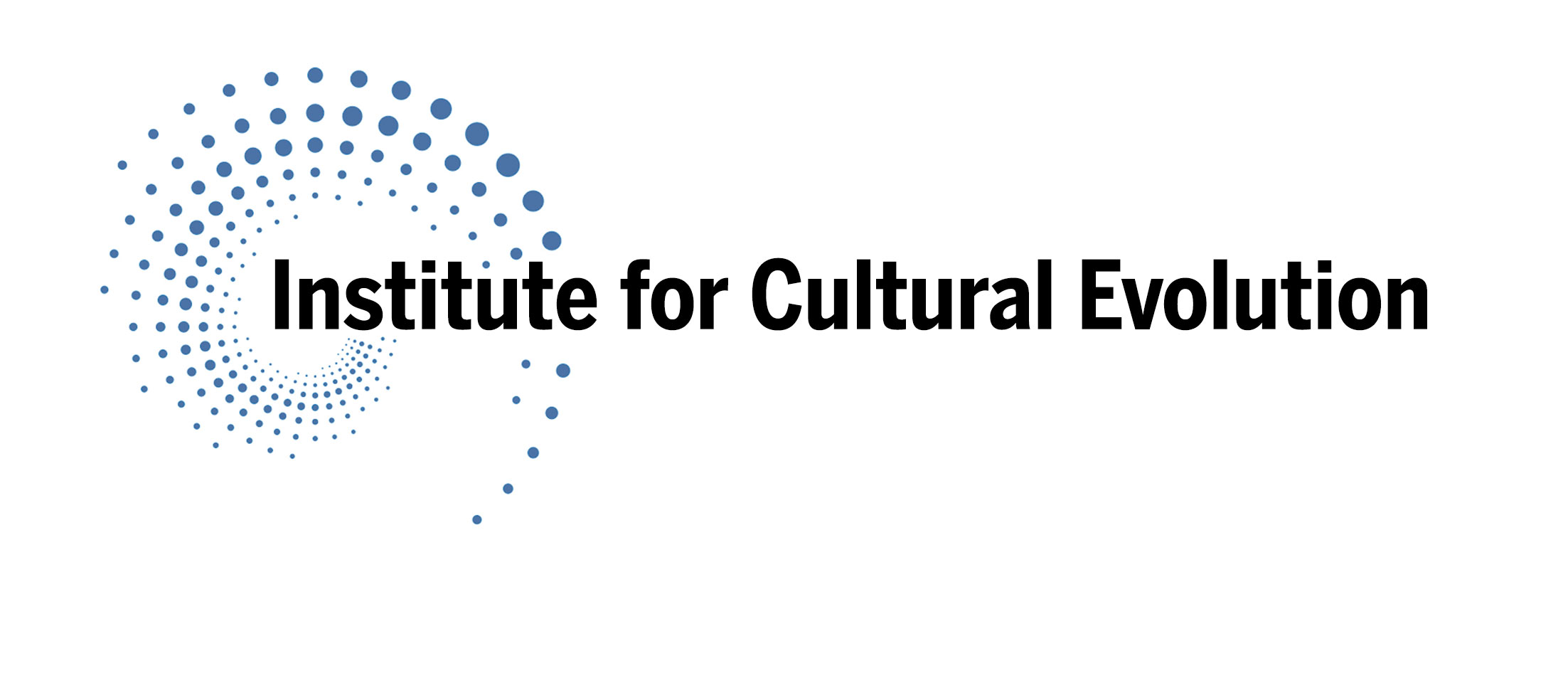


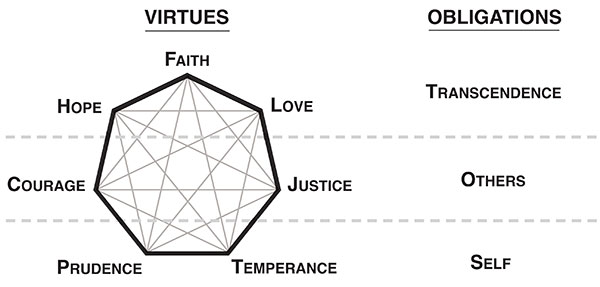
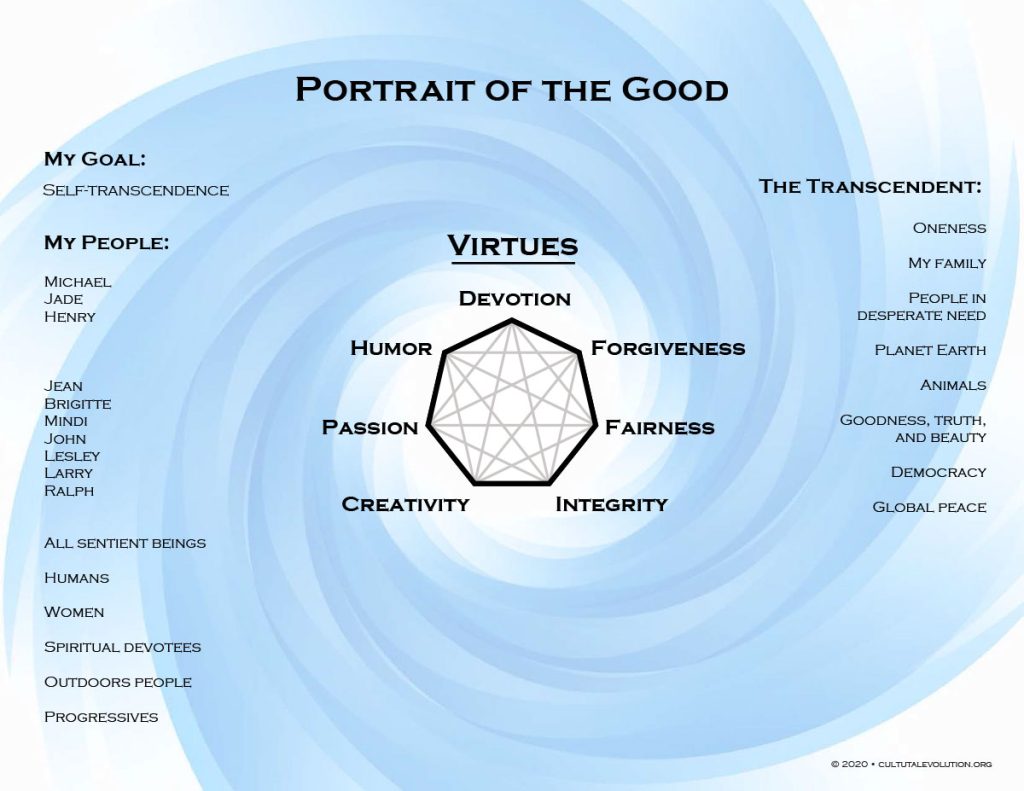
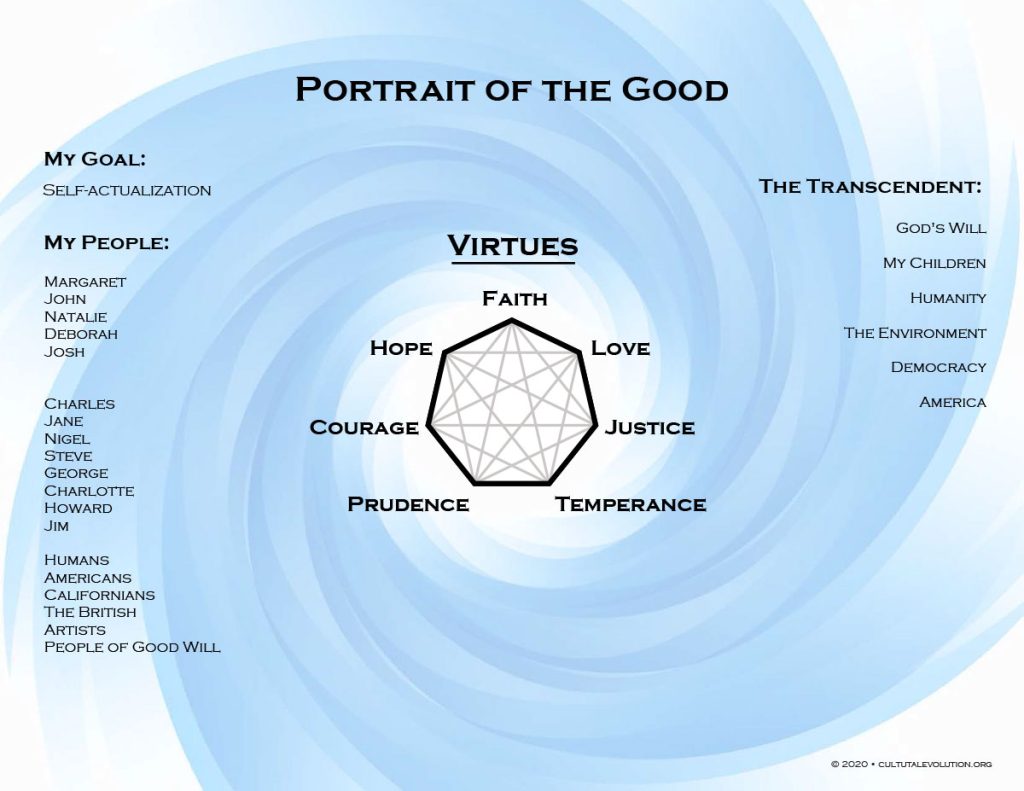
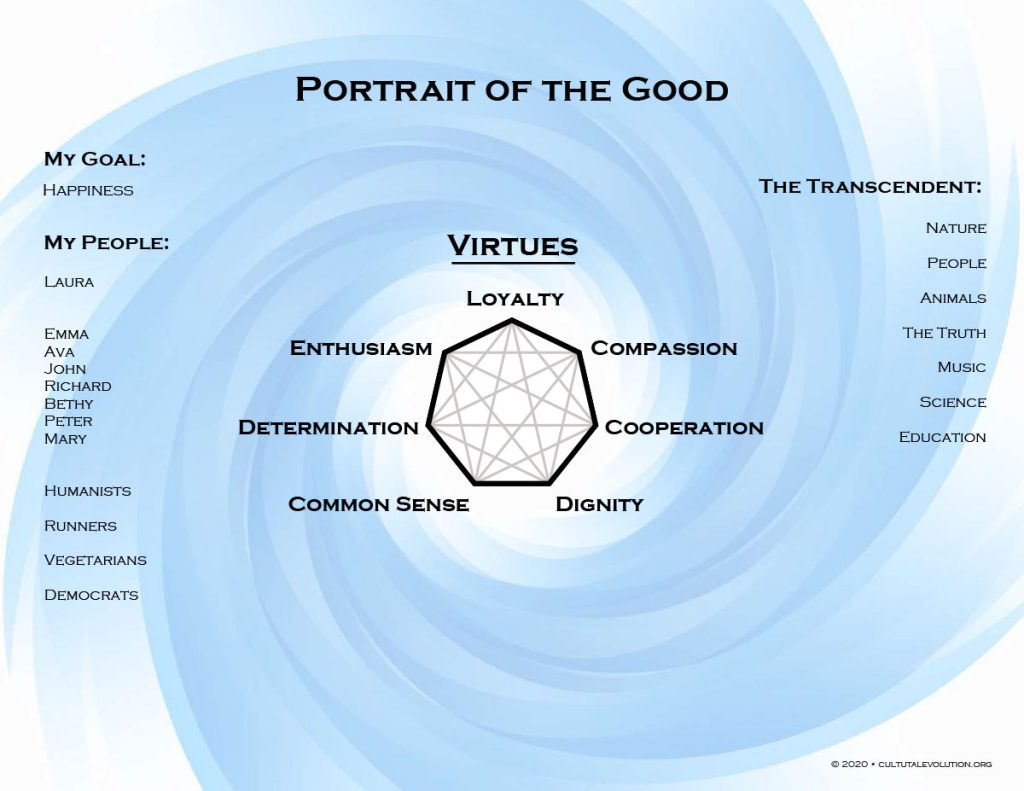
Hello,
Thought you might be interested in this report in a recent issue of the Royal Society’s Philosophical Transactions B:
http://m.rstb.royalsocietypublishing.org/content/370/1673/20140219.full.pdf
Thom Hartman relates the finding’s to the current/expected state of U.S. politics:
http://www.thomhartmann.com/blog/2015/07/what%E2%80%99s-difference-between-cancer-and-donald-trump